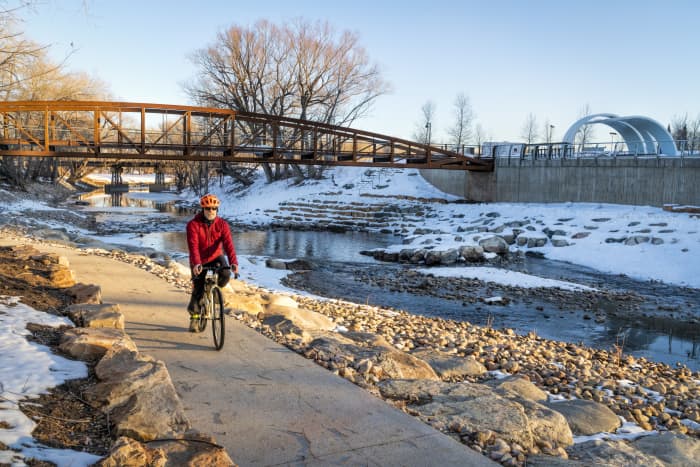HuffPost
The 4 Biggest Early Warning Signs Of Lyme Disease
Leigh Weingus – June 15, 2023

Beware of ticks this summer and pay attention to these signs of Lyme disease.
While the arrival of summer brings the opportunity to spend more time lounging on your lawn or hiking woodsy trails, we’re not the only ones excited about the long, warm days ahead: Ticks are most active from April through September. And while no one wants a bug bite, ticks are significantly more threatening than most.
These poppy-to-sesame-seed-sized bugs are responsible for the spread of Lyme disease, particularly in the Northeast, mid-Atlantic and upper Midwest. Lyme disease is the most common vector-borne disease in the United States ― in other words, it’s the most common human illness caused by a biting arachnid that spreads a parasite.
While treatable with antibiotics if caught early enough, if it’s left untreated, Lyme disease symptoms can spread to the joints, heart and nervous system, which is why it’s important to catch it early (or, ideally, to avoid getting it at all).
Below, infectious disease experts share the most common early symptoms of Lyme disease so you don’t end up with a chronic case of it ― and how to avoid getting it in the first place.
The Top Early Signs Of Lyme Disease
Dr. Tammy Lundstrom, an infectious disease specialist at Trinity Health in Michigan, and Dr. Sarah Park, an infectious disease clinician who works at the life sciences company Karius in Honolulu, suggested looking out for the following early signs of Lyme disease.
A ‘Bullseye’ Rash
Formally called “erythema migrans,” a rash that looks like a bullseye or target is the most common early Lyme disease symptom, according to Lundstrom.
“It can be very faint, however,” she said. “It also may be absent in 20-30% of cases and can be hard to see on darker skin tones.”
Park added that this rash typically appears within three to 30 days following a tick bite.
Flu-Like Symptoms
Between COVID, the flu and even the common cold, if you find yourself with achy joints, chills, a fever, a headache or other flu-like symptoms, Lyme disease may not be the first thing on your mind. But these symptoms could be signs of it.
“These symptoms can easily be mistaken for a common viral infection such as a cold or flu,” Lundstrom said. “However, the onset of these symptoms paired with potential tick exposure ― for example, hiking in the brush, woodsy areas or tall grass ― occurring three to seven days afterward can signal Lyme disease is a possible cause. Be sure to consult with a medical professional, especially if you identify the bullseye rash or develop other noted symptoms.”
Fatigue
Sudden fatigue could also be an early Lyme disease sign.
“Fatigue is an early sign that is frequently dismissed and assumed to occur from not enough sleep or regular everyday activities like working out,” Park said.
Non-Bullseye Rashes
Other rashes that don’t look like a target could be an early sign of Lyme disease, too.
“A bullseye rash may first appear as a small red bump or a solid red patch that gradually expands, but not everyone develops this type of rash,” Park said. “Other skin manifestations like hives or discomfort similar to a sunburn can also occur.”

Fatigue is one of the hallmark signs of Lyme disease.
How To Prevent Lyme Disease
While Lyme disease is treatable when caught early enough, the best case scenario is that you don’t get it at all — which is why it’s key to protect yourself from ticks, be aware of the early signs of Lyme disease, and know when and where you’re most likely to get it.
“The illness is caused by ticks in the nymph stage, not adults,” Lundstrom said. “They may be very small, around the size of a poppy seed, and hard to see, but it is important to do a thorough check for ticks after outdoor activities. This includes skin folds and your hair. Early recognition and treatment are key to preventing chronic symptoms such as arthritis, headaches, neck stiffness and facial drooping.”
In addition to checking for tinier ticks (remember: the size of a poppyseed!) Lundstrom recommends wearing long pants and long-sleeved shirts when hiking.
“Treat clothing with 0.5% permethrin or buy pretreated hiking gear, and use EPA-registered insect repellent containing DEET,” she added. “Walk in the center of trails for less contact with brush and grass, and always examine skin and clothing carefully and shower to wash off unattached ticks upon returning from a hike.”
If you prefer a DEET-free alternative, Lundstrom said picaridin, IR3535, Oil of Lemon Eucalyptus (OLE), para-menthane-diol (PMD), or 2-undecanone are options to look for in an EPA-registered repellent.
It’s also important to do regular tick checks if you live in an area with more Lyme disease and to seek help right away if you’re noticing any signs that could be symptoms of the disease.
Finally, know that in most cases, a tick has to be attached to your body for 36 to 48 hours before Lyme disease can be transmitted, which is why checking for and removing ticks quickly can make all the difference when it comes to Lyme disease prevention.
While a Lyme disease vaccine may be a possibility at some point in the future, for now, it’s a reality we’re living with. So know the signs, wear protective clothing and bug spray, and do regular tick checks this summer. Trust us, you won’t regret it.
CORRECTION: A prior version of this article incorrectly referred to ticks as insects, but they are arachnids.
















